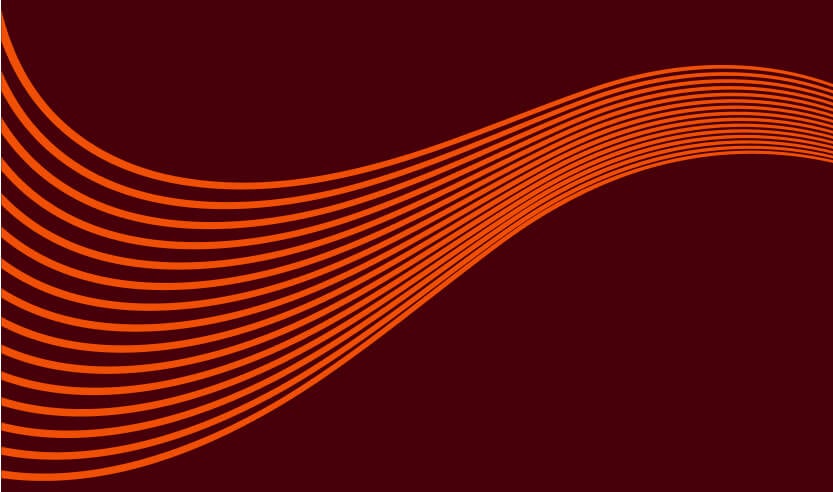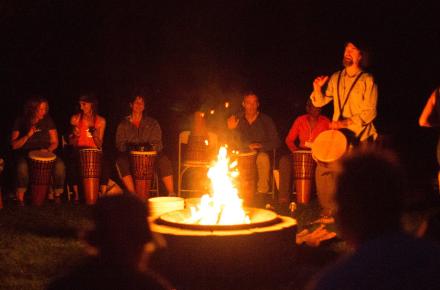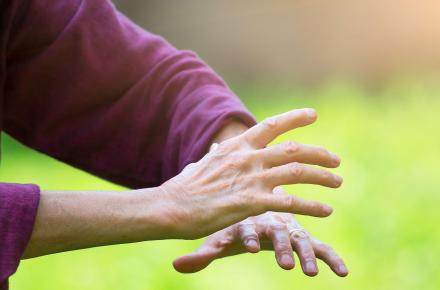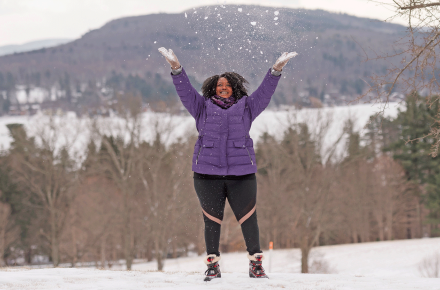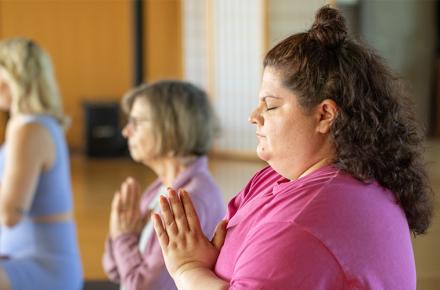Mudra Yoga: A Bridge to the Sacred Temple of the Divine

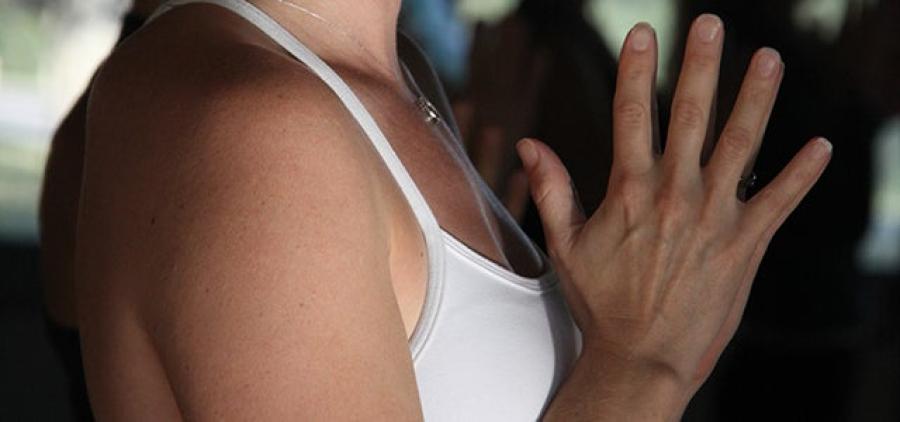
The practice of Mudra Yoga opens your highest potential to feel and heal, inviting your deepest self to surface. An empowering and meditative practice, it is a doorway to exploring the potential of posture and meditation in a whole new light. You will come into a state of clarity as you experience your innate wholeness, while gaining tools to transform and deepen both your own and your students’ yoga practice.
History of Mudras
Mudras are gestures or postures for the hands, face, or other key areas of the body. In Sanskrit, mudra means gesture or seal, referring to locking or sealing in a specific feeling, state, or energy for a particular effect. For example, Anjali Mudra, commonly known as “prayer pose,” awakens and locks in feelings of reverence, peace, and connection to our own and all others’ hearts.
Hand gestures have been practiced in most religious and spiritual traditions throughout history. For example, saints and spiritual beings like Jesus or the Buddha are depicted with their hands in specific postures. Religious practices of prayer and reverence use specific hand gestures. Think of Sufis dancing, or Muslims bowing with hands on the earth or facing the sky, or the Christian gesture for the Trinity.
Although present in other cultures, mudras were most highly developed in India. In the period of tantra, from the fifth to the fifteenth centuries, mudras were practiced, refined, and named, and their specific effects acknowledged.
Practicing Mudras
Mudras are a bridge for awakening the body as a sacred temple of the divine. Hands are keys that can unlock the door to this temple. As teachers, we can use mudras as a potent tool to bring our students into deeper and more refined experiences within the practices we are guiding.
Mudras can be incorporated into all aspects of practice, including intention, pranayama, mantra, meditation, and asana, to create powerful energetic themes and experiences in our classes. Mudras can be practiced with any level of student, health, or ability, and with any intensity level, from restorative to vigorous and vinyasa yoga.
How Mudras Work
- Each finger is related to one of the five elements according to yoga and Ayurveda. The various combinations of finger positions allow us to access and affect the five elements directly.
- Fingers have an extensive network of sensory and motor nerve endings as well as energy channels; thus mudras are a powerful vehicle for communicating and transferring information to the brain and energy centers.
- The fingers act as antennae for attuning to channels of universal energy such as abundance, love, and peace. We can connect to these frequencies with mudras and thus harmonize them within ourselves.
- Mudras are powerful vehicles for awakening every level of being (the five koshas).
- Mudras have been passed down through tradition and reflect the experiences of great spiritual masters revealed in deep states of practice.
My knowledge of mudras originally came from training as an Integrative Yoga Therapist with Joseph and Lilian LePage, authors of Mudras for Healing and Transformation.
© Kripalu Center for Yoga & Health. All rights reserved. To request permission to reprint, please e-mail editor@kripalu.org.
























